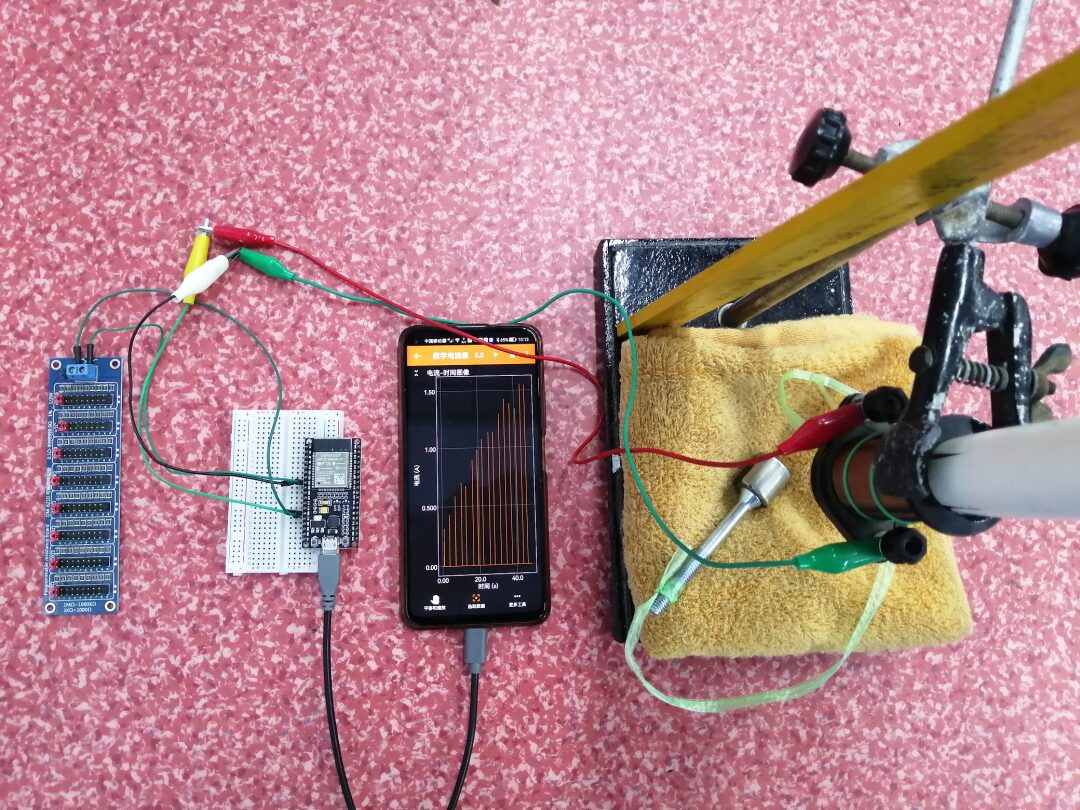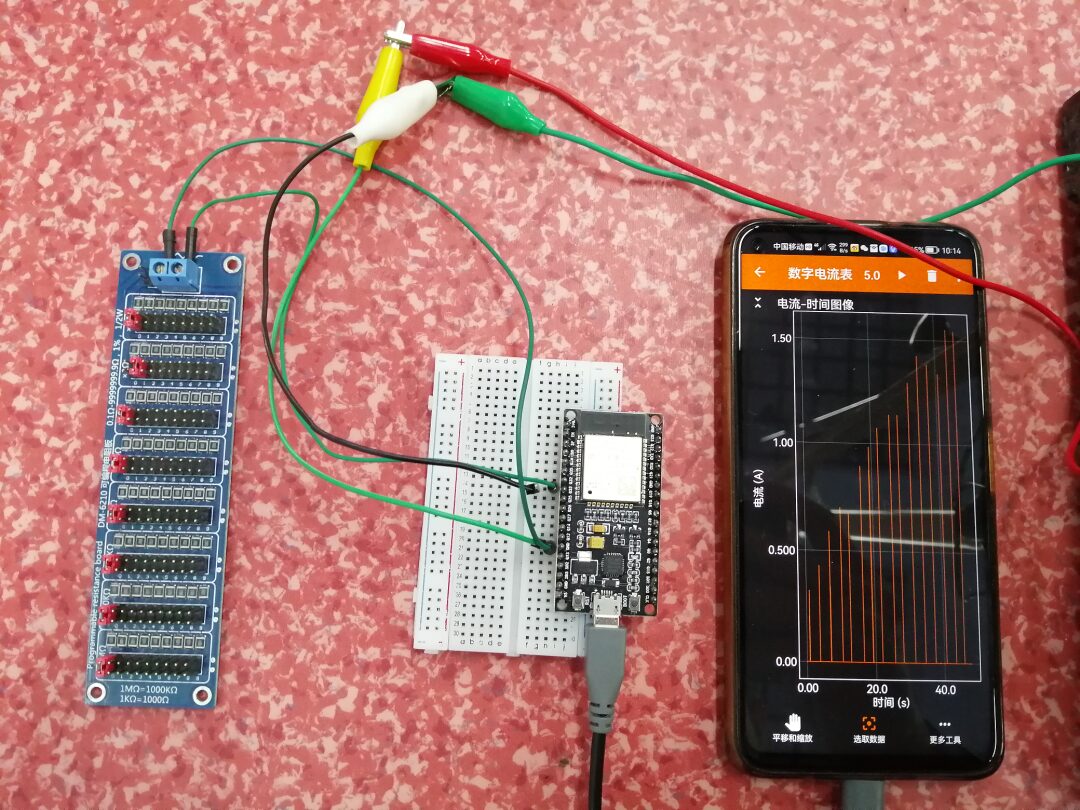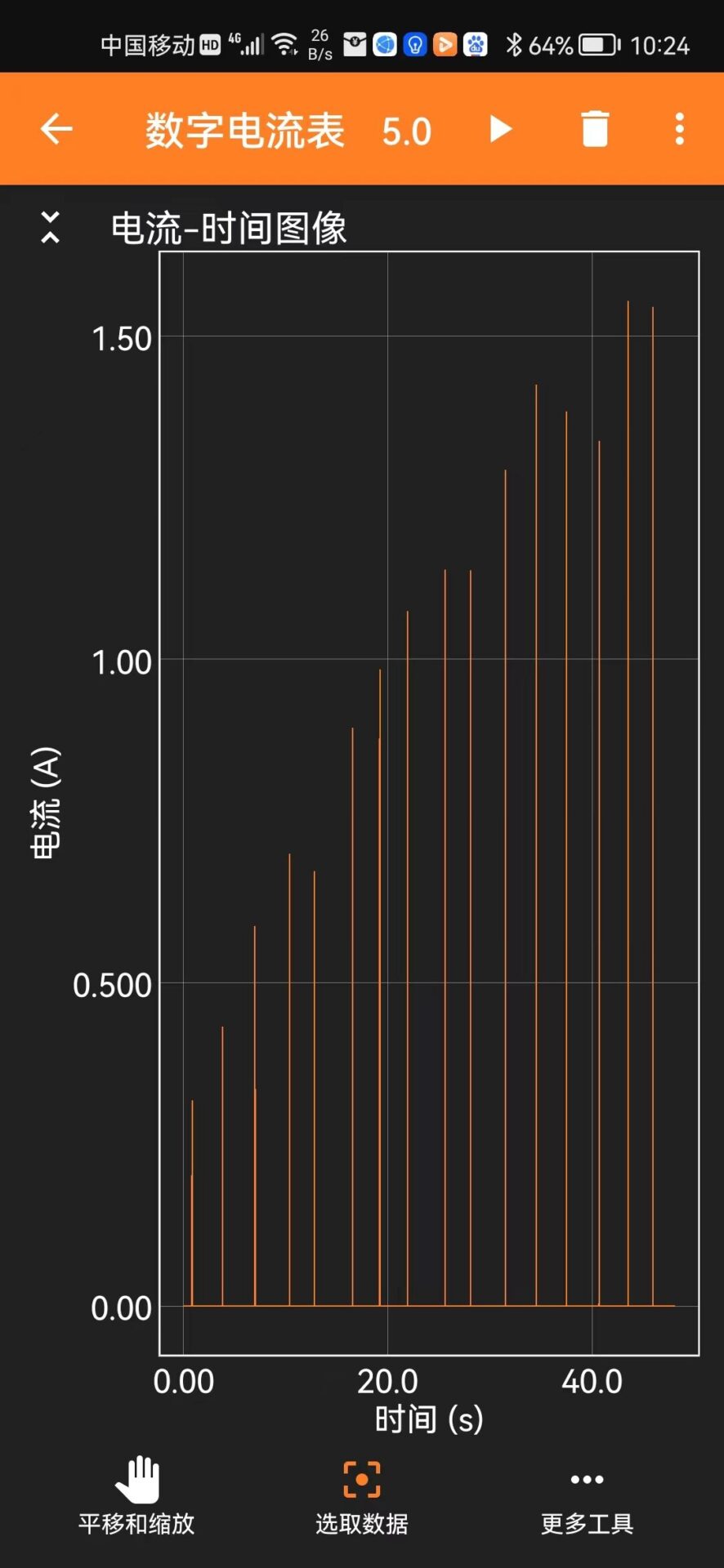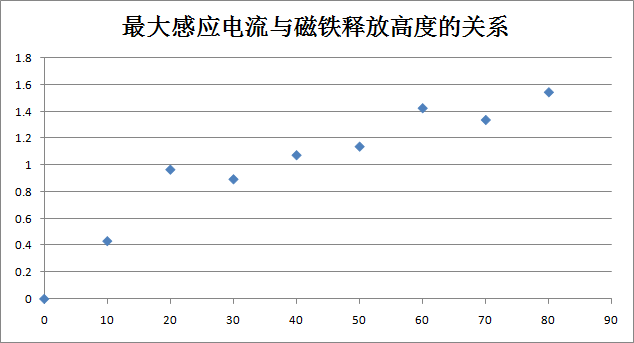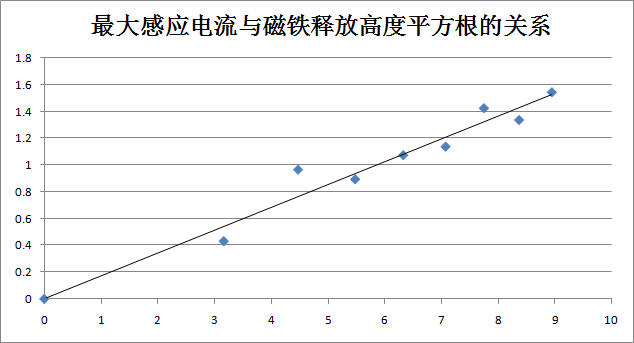Skip to content
Recently, I have been deeply studying the “Do It Yourself” experiments in the new textbook on “Electromagnetic Induction” to explore the relationship between the drop height of a magnet and the maximum induced current in a coil. The first time I used the maximum reading of a DC ammeter to represent the peak value of the induced current, I obtained a conclusion that was completely opposite to the experimental expectation.
The second time, I used a combination of Phyphox, ESP32, and ADS1115 to explore the relationship between maximum induced current and magnet drop height, achieving relatively satisfactory results. However, two data points clearly deviated from the overall distribution trend, which was quite frustrating.
At the suggestion of teachers Mei Xiaoxuan from Beijing He Ping Street No. 1 High School and Weng Haofeng from Zhejiang Ningbo High School, I simplified the process this time by utilizing the voltage sampling function of the ESP32 to directly measure the peak value of the half-cycle of the induced current generated in the coil during the magnet’s drop.
Since the magnet can be considered to have a constant speed while passing through the coil, the peak values of the induced current when approaching and moving away from the coil should be consistent.
2 Early Research from the WeChat Public Account “Yu Jian Physics”
Using Phyphox, ESP32, and ADS1115 to explore the relationship between maximum induced current and magnet drop height
Avoid using a DC ammeter to verify or explore Faraday’s law of electromagnetic induction
Using Phyphox, ESP32, and ADS1115 to conduct experiments on Lenz’s law
Using Phyphox and ESP32 Bluetooth for experimental exploration of Lenz’s law
3 Experimental Exploration
The equipment used in this experiment includes a tube, coil, iron frame, ruler, towel, magnet, fine line, breadboard, ESP32 IoT development board, programmable resistor board, and a smartphone loaded with Phyphox.
Current Measurement Tools
In previous experiments, it was found that the maximum induced electromotive force exceeded the maximum measurement range of the ESP32 (0-3.3 volts). In this experiment, a 1-ohm resistor was added in series with the coil, and the ESP32 directly measured the voltage across this 1-ohm resistor to obtain the induced current value.
Referring to previous experimental steps, the timed operation mode was adopted, with a 5-second delay before each experiment started, and the program running for 3 seconds automatically paused to allow time for positioning, measuring, and releasing the magnet height. Then, the release height of the magnet was gradually increased in increments of 5 centimeters, using the combination of Phyphox and ESP32 to plot the induced current graph and capture the peak value of the induced current.
As the experiment progressed, a right-opening parabola gradually appeared on the smartphone screen, which was consistent with the experimental expectations. However, a few data points clearly deviated from the overall distribution trend, likely due to the sampling frequency of the Phyphox and ESP32 combination not being high enough.
After the experiment, the “Data Acquisition” button was pressed on the smartphone screen to obtain the peak values of the induced current in the coil when the magnet was released from different heights, and a scatter plot was drawn with the magnet drop height on the x-axis and the peak value of the induced current on the y-axis, allowing us to derive the relationship curve between the peak value of the induced current and the magnet drop height.
It was observed that the overall distribution of data points was very regular, resembling a right-opening parabola. Following the principle of transforming curves into straight lines, two data points that deviated too much from the overall trend were removed, and a scatter plot was drawn with the square root of the magnet drop height on the x-axis and the peak value of the induced current on the y-axis, allowing us to derive the relationship curve between the peak value of the induced current and the square root of the magnet drop height.
Linear fitting of this curve revealed a very obvious proportional relationship. The experimental conclusion closely matched the experimental expectations.
4 Experimental Conclusion
With the support of current sensors, IoT development boards, and smartphones, the method of dropping a magnet was used to obtain a proportional relationship between the peak value of the induced current and the maximum rate of change of magnetic flux in the coil.
The sampling frequency of the sensor directly determines the discreteness of the data points in this experiment. The higher the sampling frequency of the sensor, the smaller the discreteness of the data points, and the more apparent the overall distribution trend of the data points.
Technological progress is endless.
